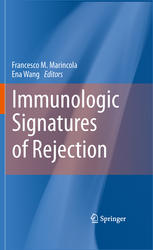

Most ebook files are in PDF format, so you can easily read them using various software such as Foxit Reader or directly on the Google Chrome browser.
Some ebook files are released by publishers in other formats such as .awz, .mobi, .epub, .fb2, etc. You may need to install specific software to read these formats on mobile/PC, such as Calibre.
Please read the tutorial at this link: https://ebookbell.com/faq
We offer FREE conversion to the popular formats you request; however, this may take some time. Therefore, right after payment, please email us, and we will try to provide the service as quickly as possible.
For some exceptional file formats or broken links (if any), please refrain from opening any disputes. Instead, email us first, and we will try to assist within a maximum of 6 hours.
EbookBell Team

4.3
88 reviewsThis book collects salient observational data, derived predominantly from human studies, regarding the mechanism(s) of rejection in various pathologic conditions; the premise is that immune rejection, better defined as “immune-mediated, tissue-specific destruction” (TSD), comprises a broad range of phenomena ranging from tumor regression, to clearance of pathogen through destruction of infected cells, autoimmunity, allograft rejection by the host and host versus graft reactions. Like different hands can turn on or off a switch, distinct mechanisms can trigger TSD; however, a convergent pathway is ultimately observed when TSD occurs consisting of a dramatic switch from chronic to acute inflammation leading to the activation of a restricted number of genes that we comprise in the immunologic constant of rejection (ICR) model. Although the ICR model does not address “why” rejection occurs but rather “how”, and it may not contribute an explanation for the determinism of rejection, it provides, if correct, a simplified road map about the convergent pathways leading to TSD. This offers the opportunity to identify a common target for immune manipulation with therapeutic purposes since ICR-related pathways are restricted in expression to the tissues in which TSD occurs while are shut off in the rest of a normal organism. The book includes chapters from outstanding basic and/or observational scientists that have contributed to this area either by defining mechanisms relevant to the understanding of the inflammatory switch or by describing how this occurs in human tissues under different pathological conditions. We would like to entice our reader(s) to test with us, through, the readings, whether our hypothesis is correct; we predict that common themes will emerge particularly if attention will be paid to the general phenomenon of TSD rather than the peculiarities of individual pathologies. With the hope of having contributed with this book something novel and important and we wish our reader a pleasant journey in the wondrous land of immune-mediated, tissue-specific destruction.